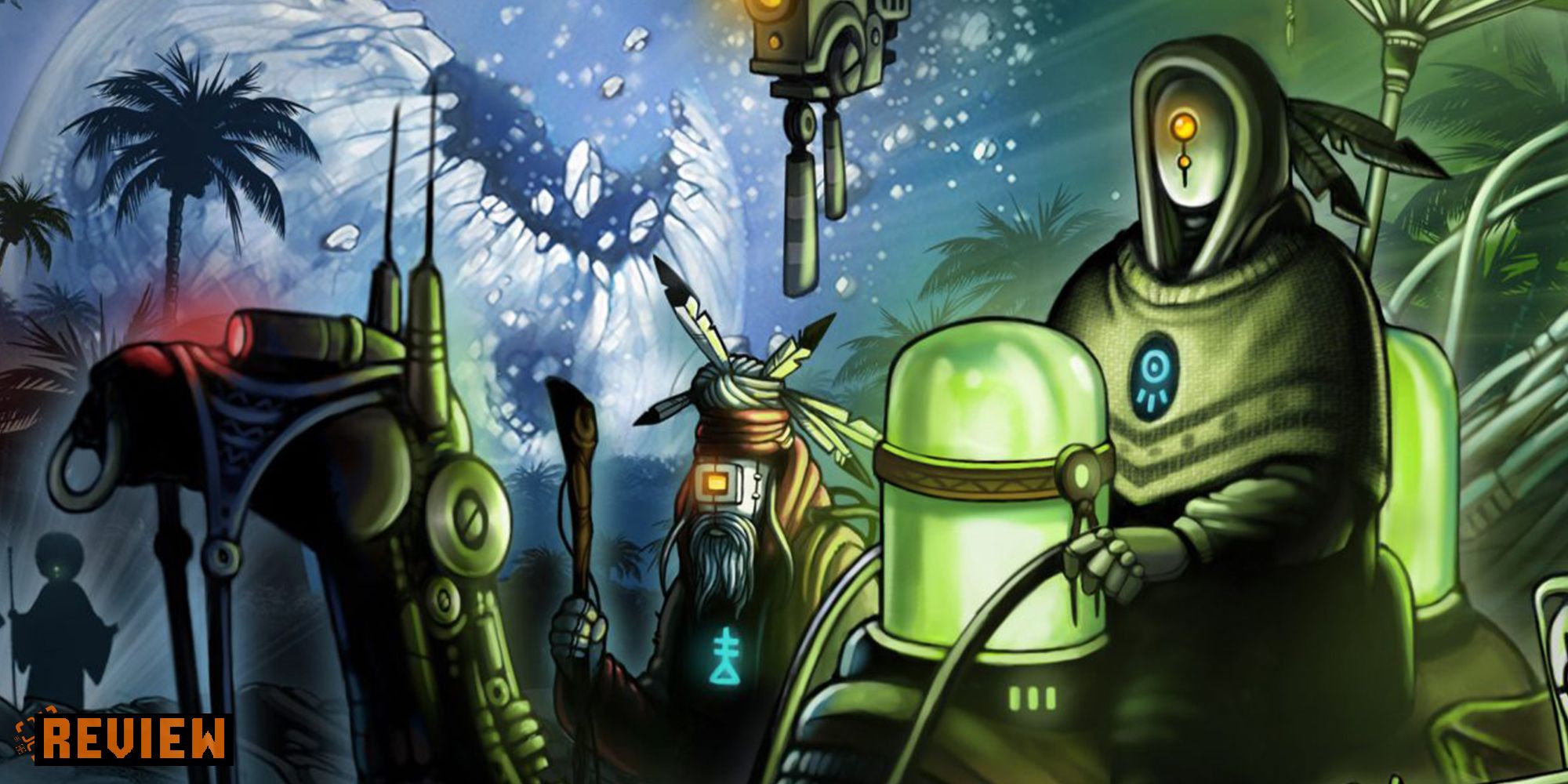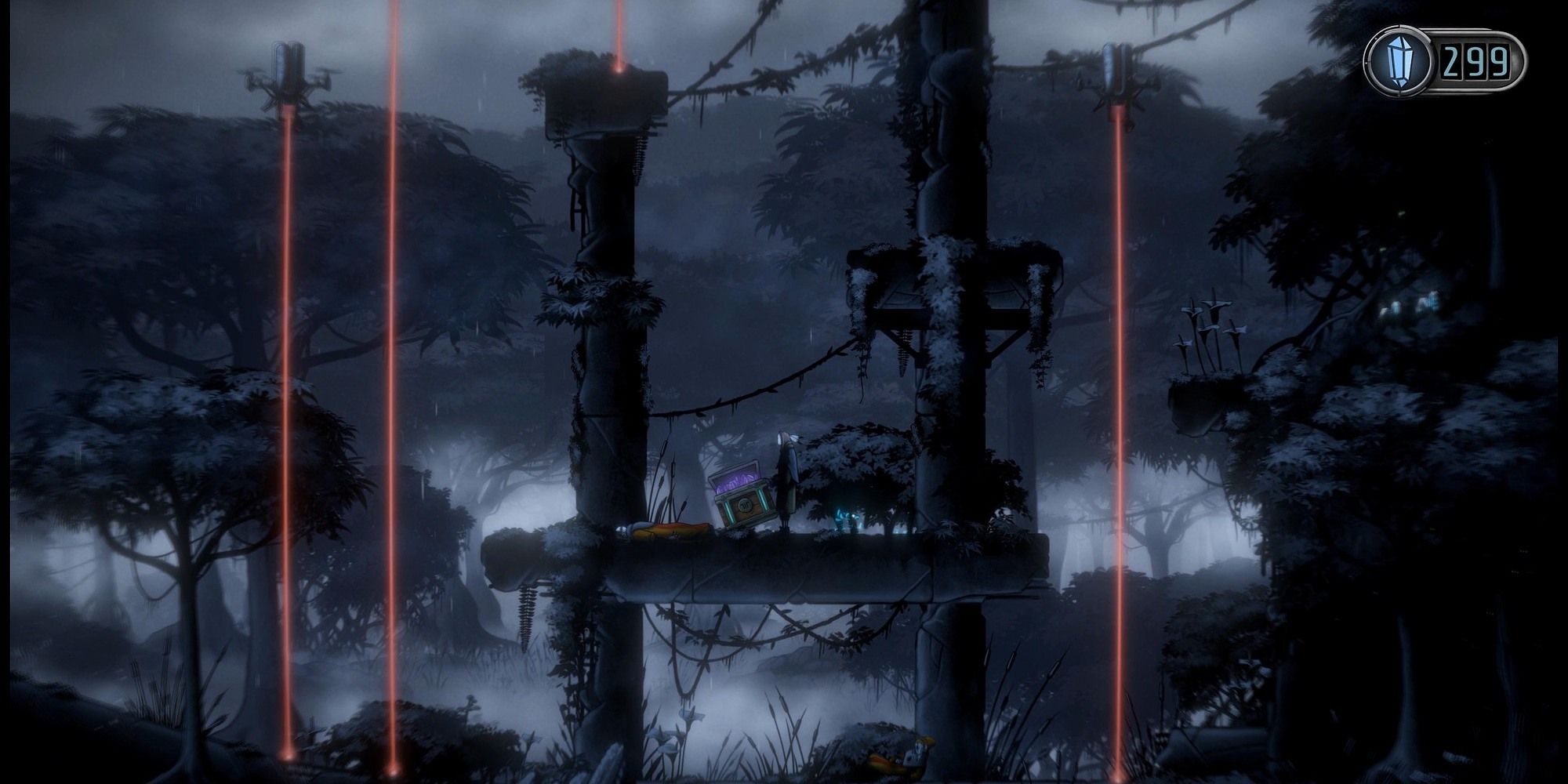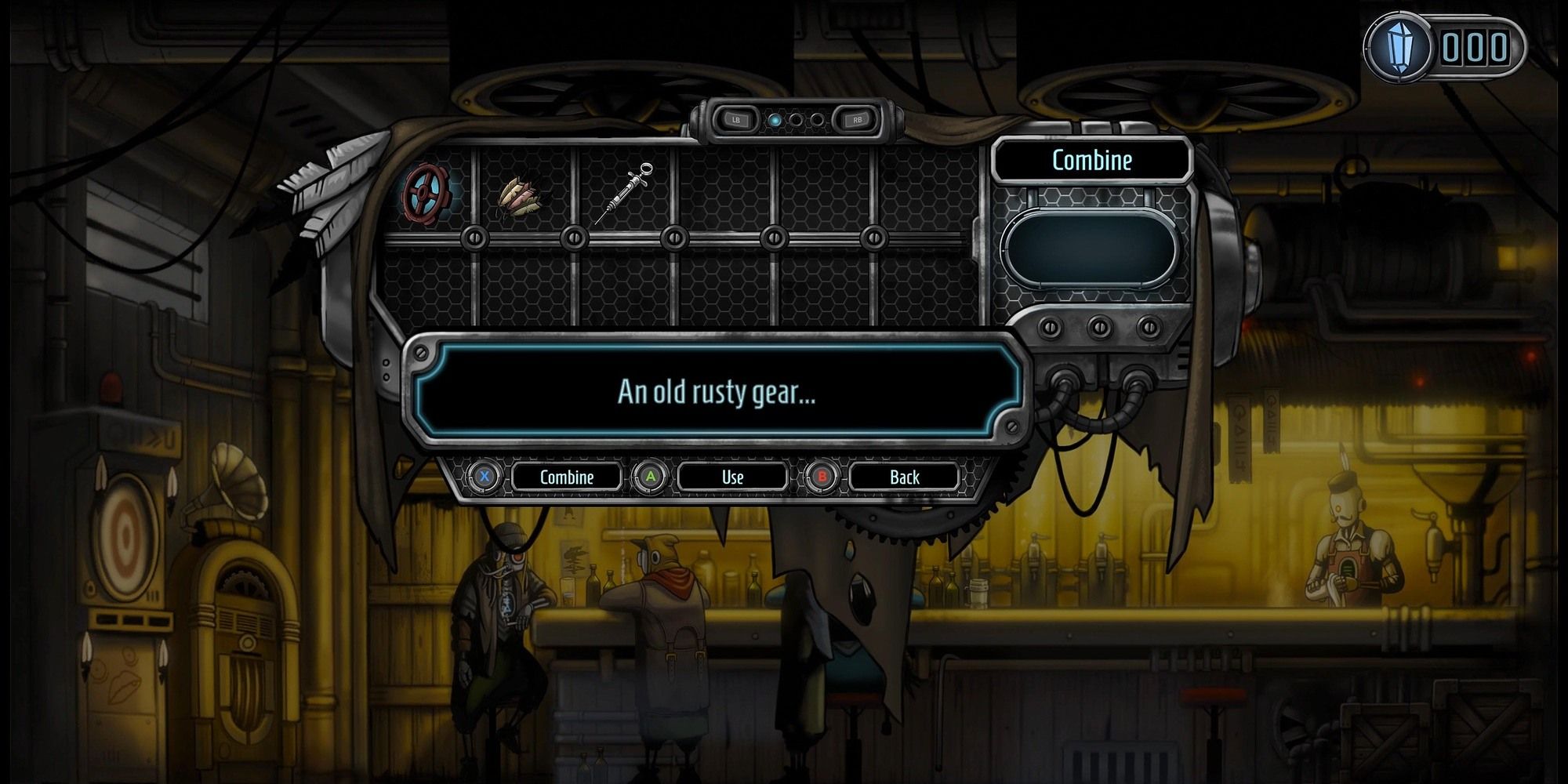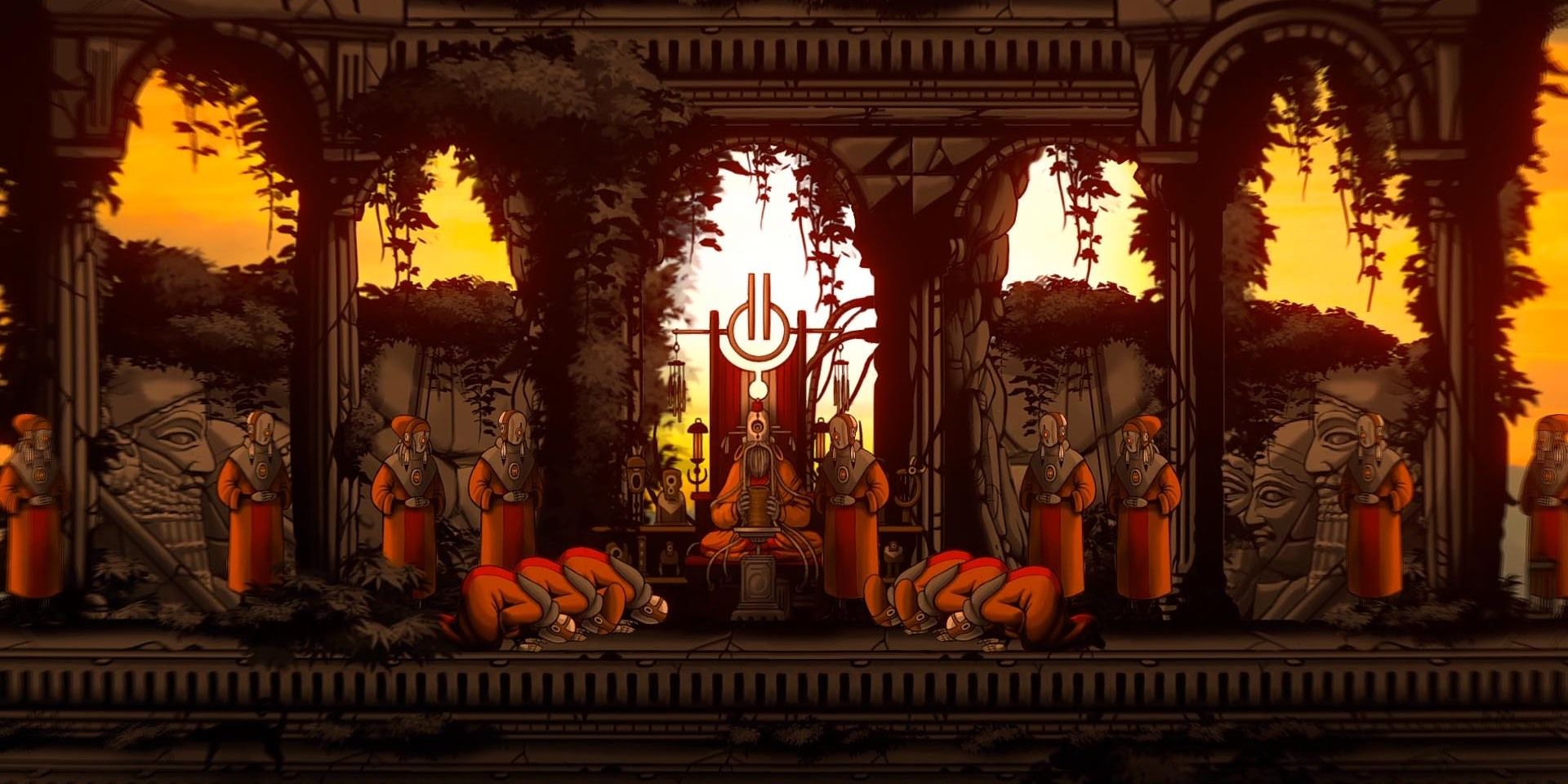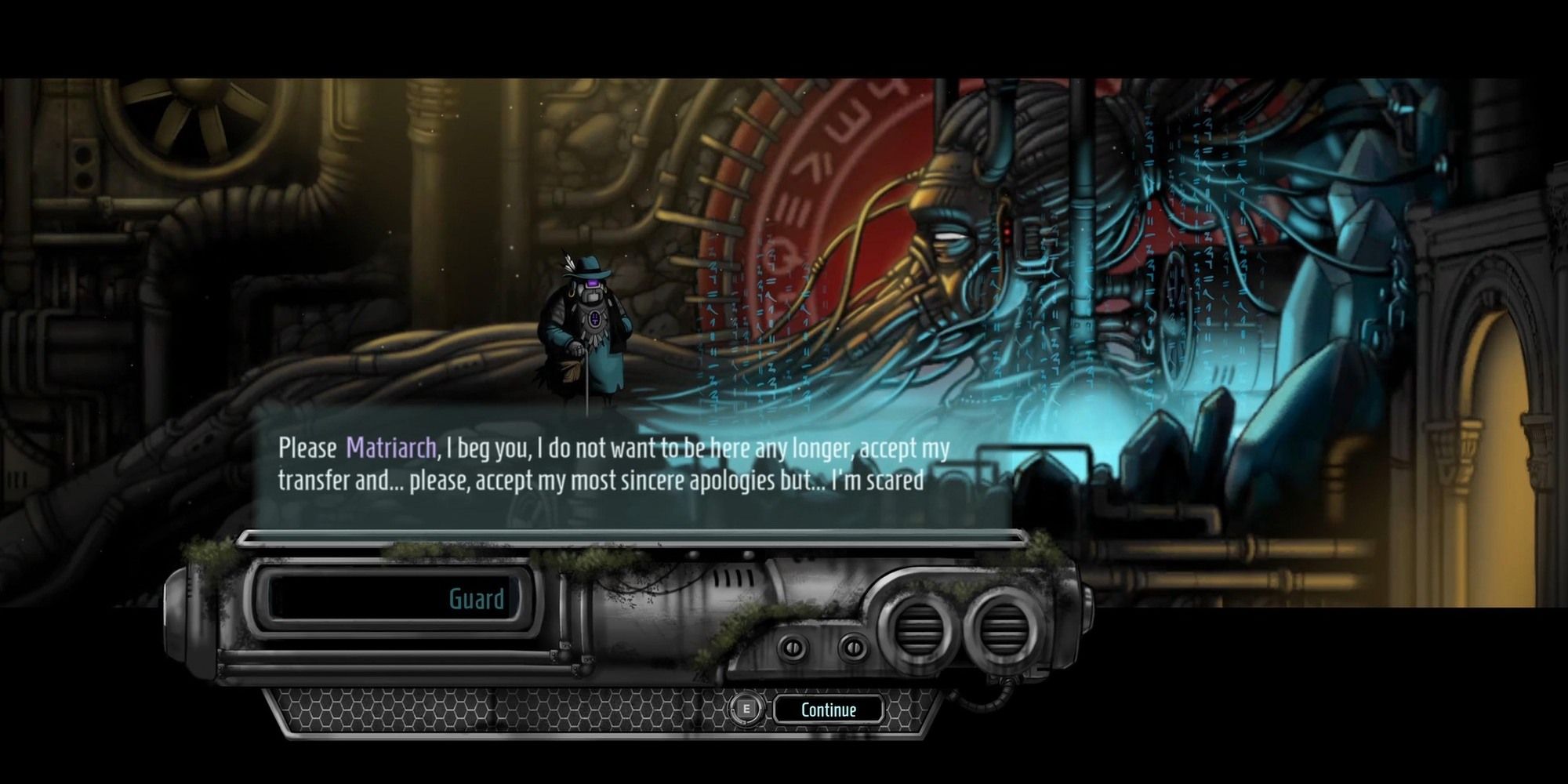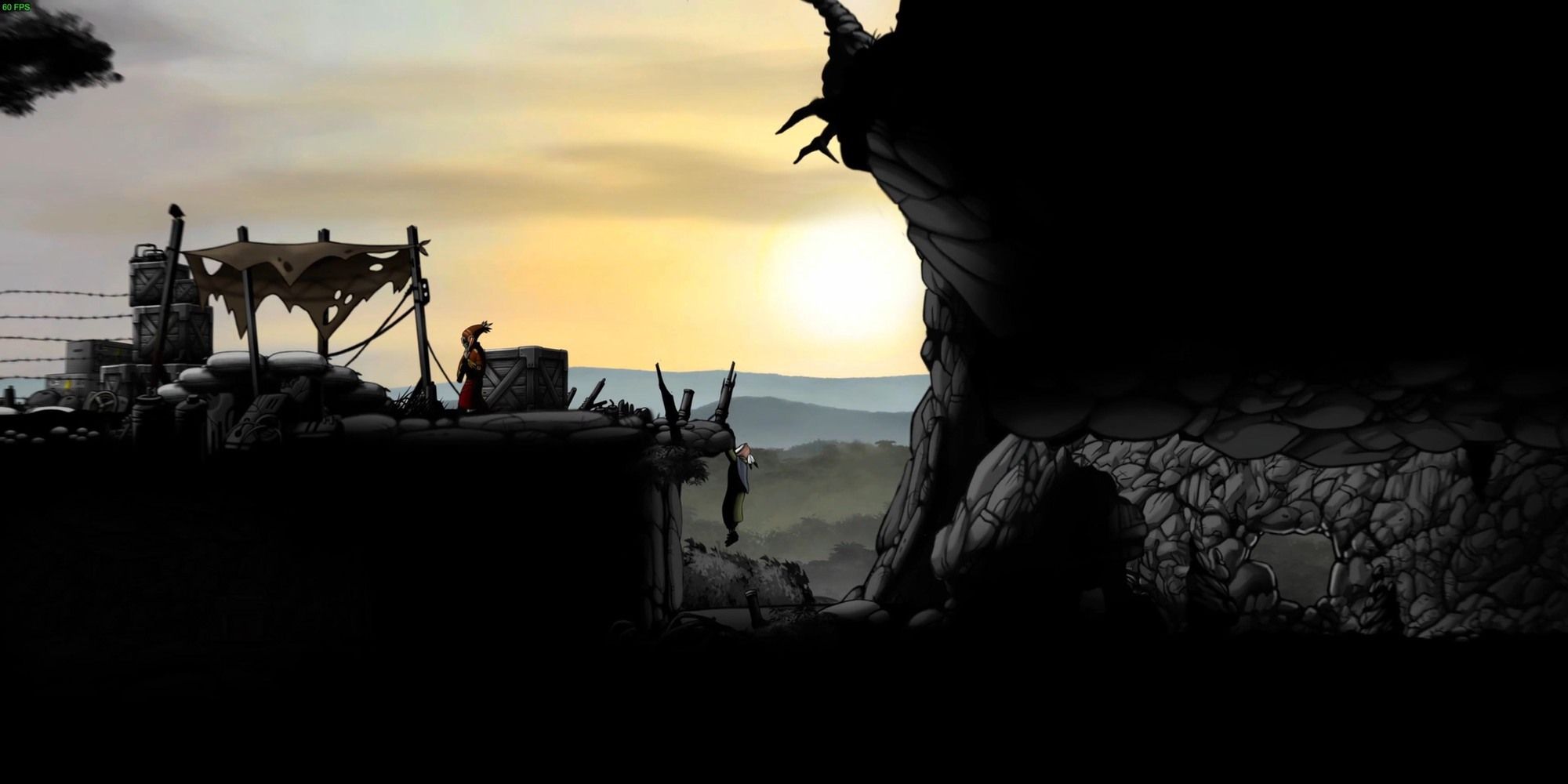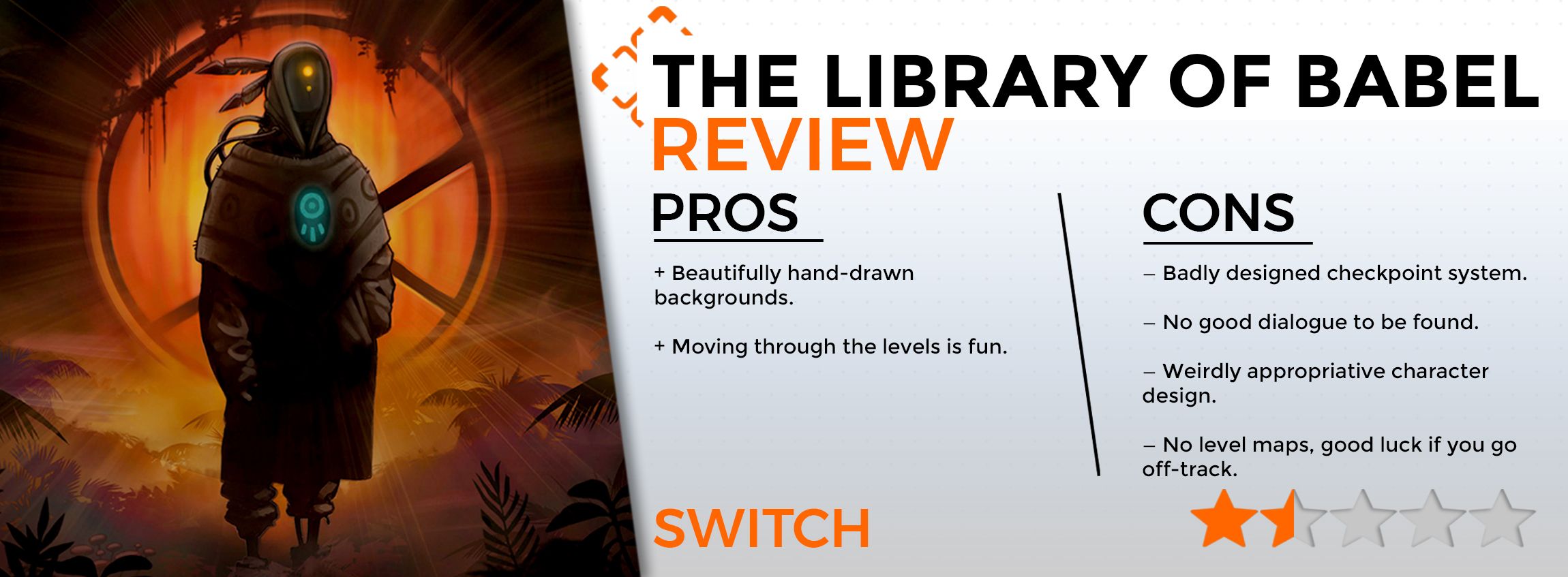The Library of Babel is a stealth platformer inspired by Jorge Luis Borges’ story of the same name. In short, the story discusses ideas of the infinite, and the paradoxical nature of life. The developers, Tanuki Game Studio, cite Apocalypse Now and a manga named Pluto as major inspirations as well. Unfortunately, despite drawing on so many sources – or perhaps because of it – The Library of Babel doesn’t seem inspired at all.
The Library of Babel is set in a Mesopotamian jungle, about 20,000 years in the future, where cyberpunk aesthetics are rampant. Humans are conspicuously absent – there are only robots. The game has you playing as a robot ‘Seeker’ named Ludovik, who is hired to find a robot called The Coronel, who has lost his mind – that’s the start of Apocalypse Now. The Coronel has been ritualistically murdering other robots, leaving their bodies displayed with horns attached to their head – that’s Pluto. Ludovik finds himself following The Coronel’s trail, venturing deeper and deeper into the game’s world and examining how robot society begins to fall apart, borrowing ideas and interpretations of Borges’ story to do so. Of course, they discover a library that contains everything that has, is, and will ever be written – that’s the eponymous library of Babel.
It’s clear the developers meant for these to be homages to their source material, and in another timeline, it could have worked – I love a good reference, as long as the reference deepens the player’s understanding of the game’s world. Unfortunately, these were more Easter eggs than anything, because The Library of Babel’s writing is the weakest thing about it. The game is rife with heavy-handed attempts to discuss big themes, indelicately leaning on cliches. Much of the game’s worldbuilding is dumped on you through dialogue, which is badly written and for some reason, seems to not be copy-edited. I thought the most interesting thing about the world would be its inhabitants, yet in all the hours I spent in the game, none of them felt fleshed out or compelling.
The Library of Babel is most fun when you’re actively moving through its well-designed levels. In some, enemies shoot you on sight, and flying drones vaporise you if they sense motion under them. There are lifts, objects to hide behind, pushable boxes to climb on, and sewers that spew toxic waste. Even the jungle is dangerous, with electric flies that electrocute you on contact and lemurs that scream if they sense you. With each new threat, you develop different strategies to get around, and that’s where the fun of the game lies, though sometimes getting through levels can be frustrating. Maps have hidden areas with secrets and extra ‘data crystals’, which you can use as currency and to regenerate at save points.
I found moving around the world very fun. The movements are dynamic and you can jump and grab onto ledges, pulling yourself up at the right time to avoid being seen. Unfortunately, the process of platforming itself doesn’t feel as fluid as I’d like. I wanted parkour vibes, with smooth and speedy level navigation, but I found myself missing almost every platform by just a hair and having to grab on and climb up.
There are other fun mechanics that I wish I could have used more – inspired by ‘90s graphic adventure games, you can combine items in your inventory to solve puzzles. I instinctively tried to put everything together when I was stuck, but things rarely combined, even when it would have made sense for them to. I enjoyed the puzzles you had to solve to enter new areas as well, which resemble pipe puzzles, and you have to rotate pieces to get a line of power from one end to another while maintaining the balance of red to blue pieces activated. It’s a very small part of the game, but they were bright spots in my playtime.
I had mixed feelings about the art of the game. The 2D environments are beautifully hand-drawn, with their backgrounds stealing the show. I loved running around in wide-open environments, admiring the glowing sun, or the fractured blue moon hanging large in the sky. The light played beautifully on the different environments, but other level elements seemed much more simply rendered, leading to some visual incongruence.
What really confused me was the character design – it seemed clear to me that the feathers incorporated into the robots’ designs were referencing Native American headdresses, and their clothes mimicked other indigenous cultures, but there was no explanation as to why. It seemed like they were leaning on a vague exoticism to emphasise the otherness of the world and the juxtaposition between technology and nature, new and old. I’ve always found it quite lazy to use indigenous cultures as a symbol of the past, and I find it lazy here.
There are other major flaws in the game, not least of all the lack of accessibility. The font is small and hard to read, and it’s very difficult to see what menu options have been highlighted because of the minute change in colour when you scroll over it. You can’t change key bindings, or the size of the font. There are no accessibility options whatsoever, and I don’t even usually need them – the text in The Library of Babel is just especially illegible.
The game also, damningly, has no level maps. This is especially annoying because at one point, I got horribly off-track and couldn’t figure out what I’d missed across the many levels. I’d exhausted every area, every puzzle I could solve with what I currently had, and would have to essentially play over every level I’d already done to figure out what was missing. The objective tracker in the menu tracks side missions and the main quest, but there is zero indication of where you need to go, only a nudge to follow the trail of the robot you’re hunting. Like, yeah, I know that. I ended up trying to explore other areas of the map and solve some side puzzles in order to get back on track, and it was incredibly frustrating that there wasn’t any signposting for players in such a big series of maps.
It wouldn’t be so bad if the game’s checkpoint system was at all helpful. You can slog through countless agonising levels in a single map, and only have one save point that allows you to return to that location – if you want to respawn after you’ve outrun that horrible gross monster, tough luck. You’ll just have to do it again. Sure, these end points usually link to other maps that you can access instead and backtrack so you don’t have to do a bunch of box-pushing and laser-dodging again, but you also can’t teleport straight to that checkpoint – you’ll get spat out somewhere else in the map and, relying on memory, work your way to where you want to go.
I wanted to enjoy this game, but I didn’t. I expected smoother movement, interesting characters, and better expression of the game’s themes, but The Library of Babel fell short. Its premise was interesting enough, and its eclectic influences could have elevated it, but it was undercut harshly by its design flaws – and its unoriginal plot couldn’t save it.
Score: 1.5/5. A game code for Nintendo Switch was provided.

